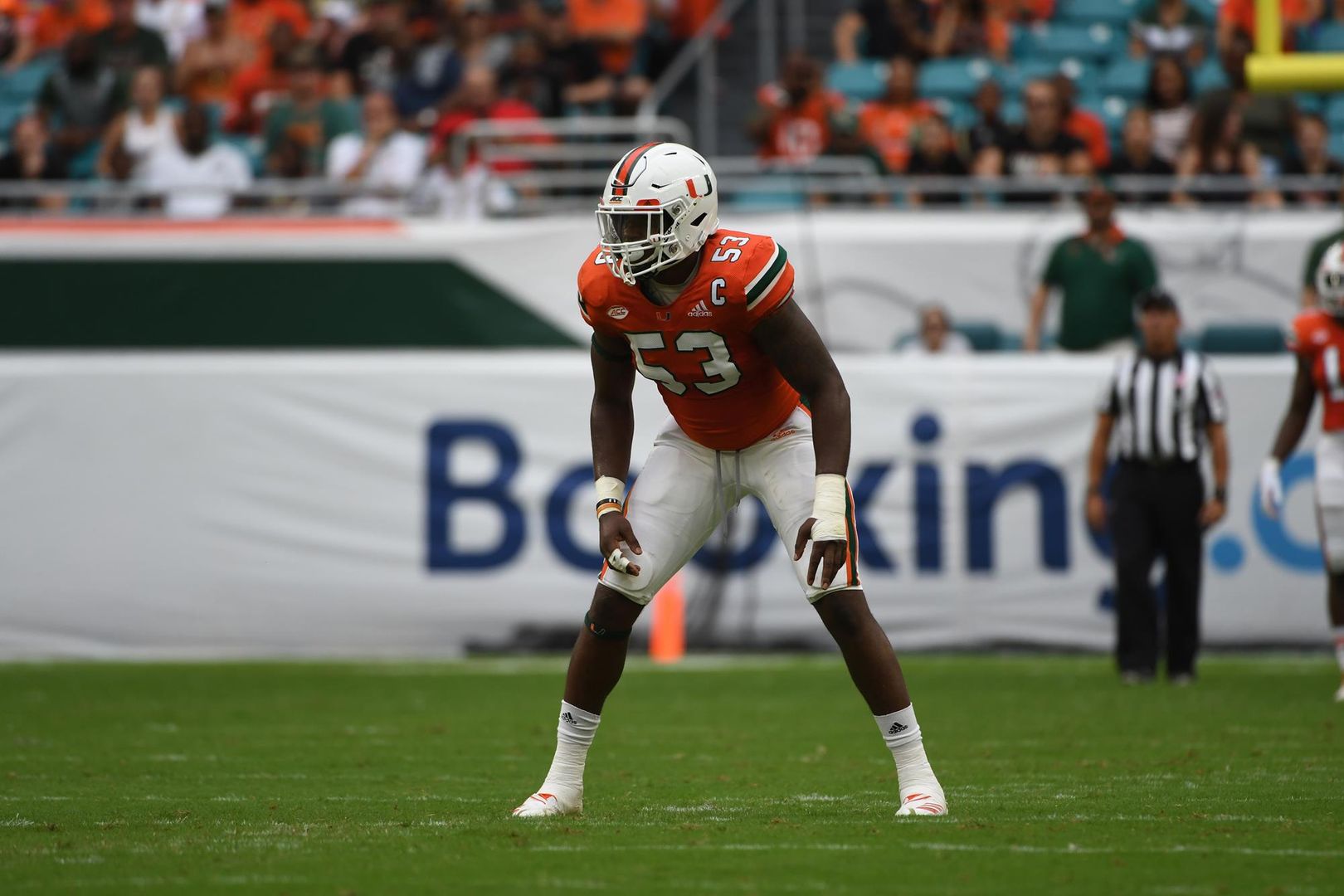
A Striking Solution
By Camron Ghorbi
HurricaneSports.com
What originated out of necessity became a cornerstone of Miami’s standout defense in 2018.
Sure, there were the tackles for loss, the stellar numbers on third down and plenty of turnover chain appearances.
But the addition of the ‘striker’ position characterized a unit that ranked among the nation’s best a season ago.
As Manny Diaz and his staff had already come to realize prior to arriving at Miami in 2016, opposing offenses were evolving nationwide. More and more teams were employing the talents of freak athletes who could stretch the field but also play with their hand on the line of scrimmage – including the Hurricanes, whose tight end tandem of David Njoku and Christopher Herndon IV gave opposing coordinators fits in 2016.
And if Diaz’s previous decision-making trends were any indication, he would be on the “offensive” and not the “defensive” when it came to a response to this personnel evolution.
The solution, in part? Strikers.
“The modern day offense has really pressed you to match them in terms of personnel,” safeties coach and co-defensive coordinator Ephraim Banda said in March. “There is no more, ‘You can play a 4-3 [base defense] and keep a [strongside] linebacker out there.’ You have to be able to rotate guys in. You have to be able to find multiple guys. What we decided to do was try to find a guy who can do more than just play in the box or play in the slot…we’re trying to find the hybrid combination guy.”
No player was more successful in serving that exact role than Romeo Finley, who was a standout contributor for the Hurricanes in his striker debut.
Finley, who totaled just seven tackles and one PBU as a special teams contributor in 2017, ran with his new job responsibilities and ended up making four starts in a breakout year. Finley totaled 28 tackles, five tackles for loss, four PBUs and two interceptions.
“I’m good at reading and I’ve got a bigger body so I can come in and fill the ‘A’ gap,” Finley said. “Then I can come in and guard the slot.”
Finley and Zach McCloud formed a dangerous tandem. McCloud, who started the other nine games last year, finished with 44 tackles ad 4.5 tackles for loss in another impressive season. Redshirt freshman Gilbert Frierson was moved to the striker position prior to the beginning of spring ball.
“That’s what [offenses] are doing, right? They’re trying to find that special tight end,” Banda said. “Defensively, Coach Diaz and all of us, in terms of our philosophy, say, ‘Okay we’re not going to just sit back and be a passive defense. We’re going to match you with our aggressiveness, the same way an offense does.’
“That’s what our mentality is with the striker.”
As offenses become more multiple, Banda says, Miami’s defense now has more answers than ever before. For instance, when teams are playing ’12’ personnel – with two tight ends and seven in-line blockers – it’s more likely McCloud would be on the field. ’10’ personnel – one running back and four wide receivers – would call for a more nickel-type safety. ’11’ packages – which most teams run – include a tight end, three receivers and one running back.
“Therefore you can keep a striker-type body, a safety who can play press-man but who can also get into the box and play run-fits, as good as a SAM linebacker type. Now you’re not having to be so in and out of personnel,” Banda said. “What the striker is, is essentially a combination of all those guys.”
Despite playing under a new coordinator in Blake Baker, Finley, McCloud and fellow strikers will still be defined this spring by their toughness before anything else.
“We’re trying to separate the guys that really like football from the guys that really love football,” Diaz said. “That’s why I love what our staff is doing. They’re being very demanding of our players – not just physically…but mentality. There’s a lot to learn and ultimately we’ll see who has the ability to keep up.”






